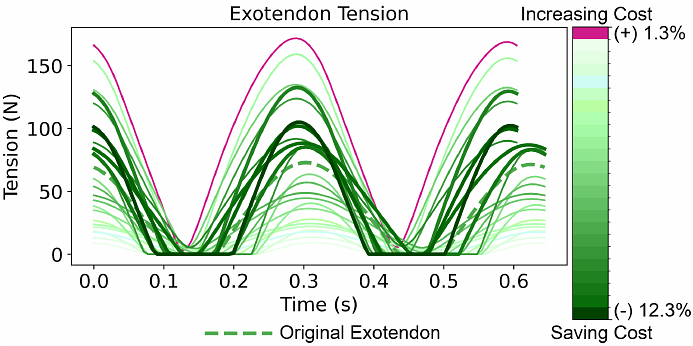OPTIMIZING AN EXOTENDON AT AN INCREASED RUNNING SPEED

Voice is AI-generated
Connected to paperThis paper is a preprint and has not been certified by peer review
OPTIMIZING AN EXOTENDON AT AN INCREASED RUNNING SPEED
Stingel, J.; Bianco, N. A.; Ong, C.; Hicks, J. L.; Delp, S.
AbstractThe exotendon is a passive device that reduces the energetic cost of running at 2.7m/s, but its potential benefits at higher speeds remain unclear. Experimental testing is limited by the need for participants to stay below their aerobic threshold. Here, we use muscle-driven simulations to overcome these constraints and inform exotendon design. We validated a framework that estimates changes in energy expenditure, kinematics, and muscle activations with and without the device. Simulations at 4m/s predicted a 10% reduction in energy cost with the exotendon compared to natural running. Testing 25 designs, we found that a longer, stiffer exotendon yielded the greatest savings (12%).